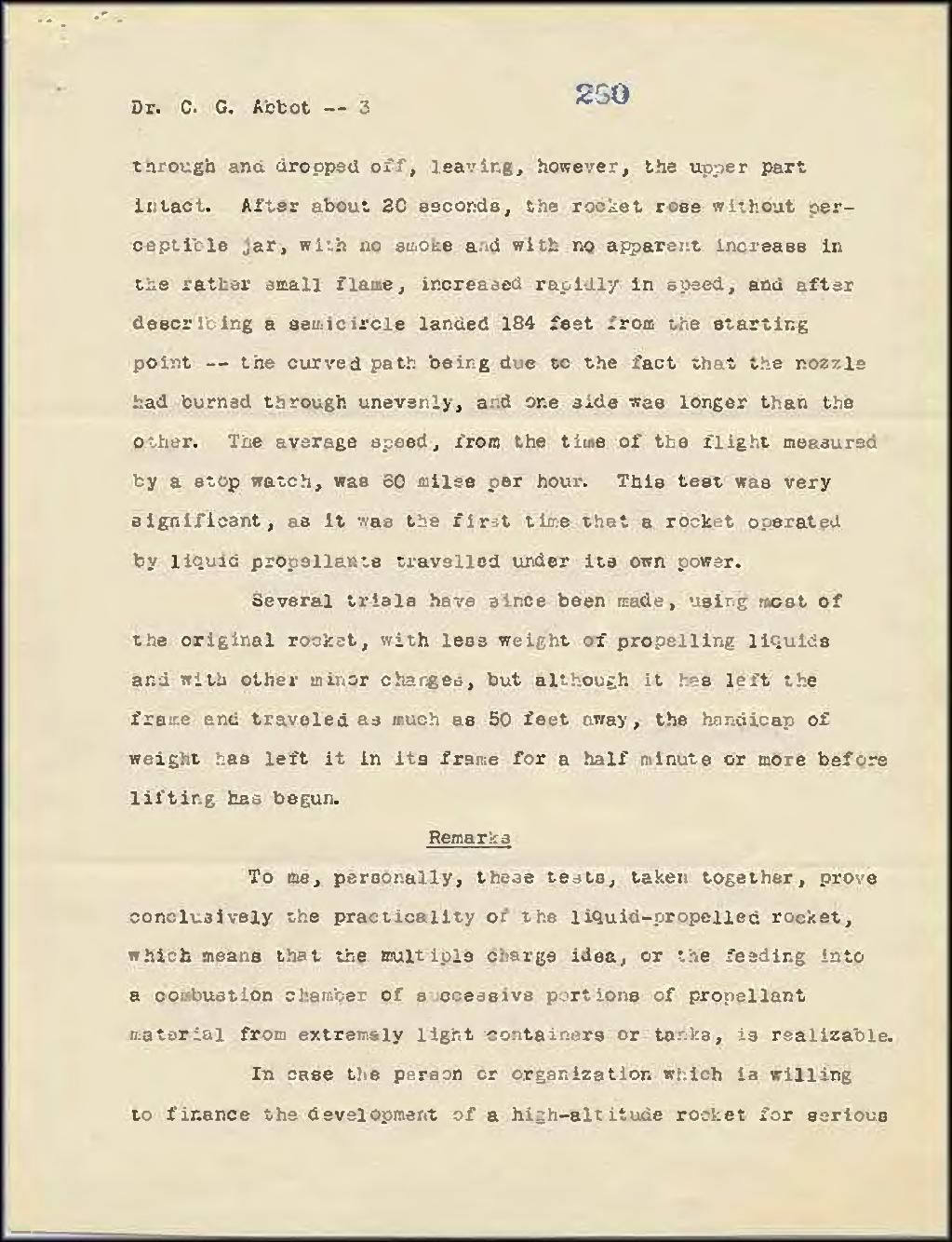Dr. C. G. Abbot -- 3
through and dropped off, leaving, however, the upper part intact. After about 20 seconds, the rocket rose without perceptible jar, with no smoke and with no apparent increase in the rather small flame, increased rapidly in speed, and after describing a semicircle landed 184 feet from the starting point -- the curved path being due to the fact that the nozzle had burned through unevenly, and one side was longer then the other. The average speed, from the time of the flight measured by a stop watch, was 60 miles per hour. This test was very significant, as it was the first time that a rocket operated by liquid propellants traveled under its own power.
Several trials have since been made, using most of the original rocket, with less weight of propelling liquids and with other minor changes, but although it has left the frame and traveled as much as 50 feet away, the handicap of weight has left it in its frame for a half minute or more before lifting has begun.
Remarks
To me, personally, these tests, taken together, prove conclusively the practicality of the liquid-propelled rocket, which means that the multiple charge idea, or the feeding into a combustion chamber of successive portions of propellant material from extremely light containers or tanks, is realizable.
In case the person or organization which is willing to finance the development of a high-altitude rocket for serious
